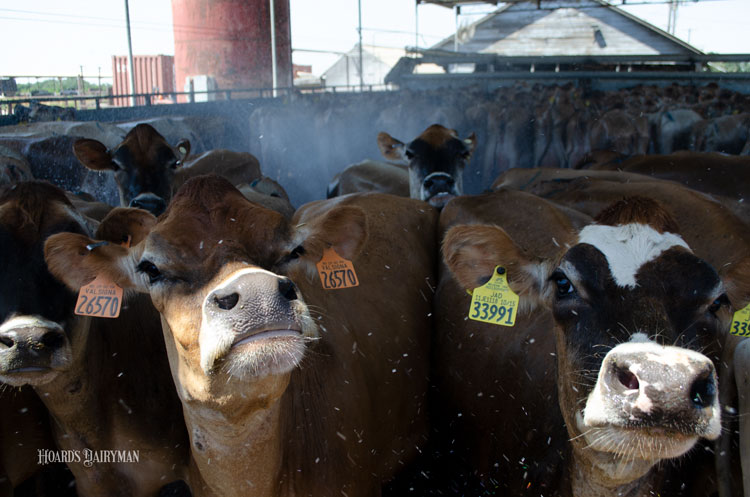
The value of water to cow comfort cannot be understated. It’s useful to remember that, in times of potential heat stress, water is not only necessary for drinking but can also help cows release excess body heat.
Direct and indirect evaporative cooling can be used in combination with fans to have direct impacts on body temperature, explained John Tyson during a Penn State Extension webinar. Each can be better suited for different climates.
Make the cows wet
Sprinklers utilize direct evaporative cooling, allowing moisture to evaporate from the skin and heat to be directly removed from the animal’s surface. This intermittent wetting and drying of the skin effectively transfers heat from the cow to the environment, lowering respiration rate almost immediately. Be sure to use enough water to soak through to the skin so as to not trap the layer of hot air between the animal and the water.
Remember, though, that the heat and moisture does not disappear — it is only moved to the external environment. Effective air exchange with forced convection will then help move the moist air out of the barn.
Tyson recommended soaking when cows are in tighter conditions, such as the holding area and return alleys from the parlor, to limit water waste. Direct evaporative cooling is most effective in more humid climates, he said.
Make the air wet
Indirect evaporative cooling, on the other hand, cools the air around the cows. It is more effective in arid climates to allow for a more dramatic drop from inside to outside temperature. Good air exchange remains important to keep the environment fresh.
This method of cooling draws air into the barn through water-covered pads, and the ambient temperature of the barn then lowers as the water evaporates. The pads do limit inlet space that must be made up. Another option is fogging, where high-pressure mist is forced into the barn and evaporated out.
Use with fans
Tyson shared research showing that a combination of soaking cows every five minutes and fans lowered body temperature by nearly two degrees over the course of 20 minutes.
“The use of water for forced evaporative cooling is a very good way to cool hot cows off very, very rapidly,” Tyson concluded.








